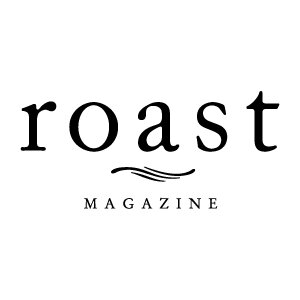Coffee’s Quiet Battleground: Closing the Gap Between Industry and Consumer Flavor Preferences
By Phil Beattie
There is a quiet flavor battle brewing, and the frontlines are somewhere between the coffee mug and the cupping table. In this battle, you’ll hear cries to rally folks to the strong camp, the smooth camp, or the vibrant camp. Citrus and lactic lock arms to charge headlong into milk chocolate and nougat, while bittersweet and oaky wait for their chance to make headway.
In this battle there are three camps—the coffee traditionalists, the devotees and the new wavers—all with a deep care for their cup and an axe to grind about how other coffee drinkers look at them.
The Traditionalist: Coffee has a deep history of being the strong hearty elixir that gets you going. Whether as a slammed shot of espresso or a hair-raising thick press pot, coffee serves as the smelling salts of these motivated movers and shakers. If you can’t take the sludge, feel free to add milk and sugars of all sorts, but that coffee better punch through—reminding you in the finish that this is a hearty beverage not for the faint of heart. Coffee is here to remind you it’s time to get up! And that is best done with a strong grip.
The Devotee: Knows that coffee has so much more to offer than a punch in the mouth. Coffee is your friend. Coffee is here to set the backdrop to your best conversations, not to dominate the conversation. Coffee should be respected yet approachable, available any time of day, bringing balance and warmth to both mug and mind. Just chill, literally—try this cold brew.
The New Waver: Sees your three waves and promptly furrows their brow. Your antiquated categories can’t contain the wildness at the heart of coffee. Your standard operating procedures and best practices won’t birth the biome of coffee’s vibrant future. Never settling for a comforting cup, coffee should scream for your attention and confront your preconceptions. You say 17 hours of fermentations? I say seven days. And please stop slurping your espresso!
Latte and desserts. (Photo by Phil Beattie)
And so, the stage is set and the stakes are high. We may have moved on from the task of defining “specialty coffee”—a term few outside the industry knew needed defining—but the coffee drinking public may clap back if we try to shove what we’re drinking down their collective throat. I’ve been in the industry long enough to remember the mantra of “educate the consumer,” yet all that mantra may have accomplished was to indoctrinate ourselves and alienate the consumer.
A Walk Down Memory Lane
How did we get here? The turn of the century was still dominated by the deep, dark, oily roasts—from nameless origins with claims to be able to “punch through milk” and “put hair on your chest.” A whole host of young coffee revolutionists decried these coffees as lifeless and burnt, charred, and hiding predatory supply chains behind flavors of dark chocolate and tobacco.
The way to displace these heartless coffees seemed clear: a lighter roast and traceability. Certifications complimented descriptions of elevation and region-specific coffee, with an estate or cooperative name sprinkled in here or there. Primary flavors became approachable and balanced, while clean cup and sweetness dominated the dialogue of what a “good coffee” would demonstrate in the cup. And, oh yes, cupping! Cupping became the standard, not just for detecting defects but for isolating qualities. Groups like the Roasters Guild and Coffee Quality Institute (CQI) created movements of teaching the cupping process around the globe.
In origin-focused coffee competitions and auctions, the most revered flavor callouts tend to be attributes tied to organic acids. (Photo by Juan José Sánchez Macías)
Quality discovery with the goal of a more equitable supply chain—and a side of “will someone teach these people coffee is the seed of a cherry?”—had us all slurping louder, searching for the deity in the cup.
And so, the question became, how can we bring attention to these coffees, these producers, these new flavors unfolding in these more sophisticated roasts? The answer was clear: Competition.
Competitions Shape the Landscape
Since the early days of origin-focused competitions and online auctions, standing out has been the goal. On a table full of balanced, clean coffees that are all roasted to the same degree, how can a coffee grab a judge’s attention? It must pop! And nothing pops quite like a splash of fruit in a sea of browns.
I can remember being on the Colombia Cup of Excellence International Jury in 2006. As a young cupper surrounded by veterans and luminaries, I was thrilled to follow the tasting lead of my coffee buying heroes in the room. After each round of cupping, we would gather to regroup and discuss what we had just tasted. Around the room we’d go, calling out flavor descriptors for each blind-coded coffee we’d tasted. Lower scoring coffees would be given descriptors like clashing flavors, rough, astringent, disjointed. The coffees that scored well enough were described as balanced, sweet, clean finish. But the stars of the cupping table would open the flood gates of descriptors: lychee, mandarin, floral, ripe red apple, winey.
It only took one or two flights before a young, eager cupper such as me was able to calibrate to the group. And so it was in Neiva, Colombia, in 2006 that I drank the Kool-Aid, the flavor mantra of almost every coffee competition for the past two decades: “Tart is king. Balanced is boring. Bitter is bad.”
This hierarchy of flavor pointed to one key attribute as the measurement of quality: acidity. The most revered flavor callouts were attributes that could largely be tied to organic acids—citric, malic, quinic, and (the king of late) lactic. These acids and their associated flavors and mouthfeel can be tied to the species and variety of tree, the elevation of the farm, the ripeness of the cherries, and the meticulous processing of the coffee. All of these attributes related to terroir are important and worthy of the spotlight. These unique flavors have led to some amazing and well-deserved recognition for coffee producers, roasters and cafes, as year after year record-breaking prices are paid for smaller and smaller lots of coffee with more and more exotic flavor descriptions.
Sam Spillman and Phil Beattie at the 2019 U.S. Coffee Championships. (Photo courtesy of Phil Beattie)
Barista Competitions: Fuel on the Fire
The arrival of barista competitions added fuel to the fire. Each year, roasts are getting lighter and lighter, fermentations longer and longer, and there’s no slowing the fruity freight train. I should know, as I had the deep and humbling honor of roasting for two United States Barista Champions.
In 2014, I roasted the competition coffee for Laila Ghambari, who was the director of coffee for Cherry Street Coffee at the time. The coffee was produced by Emilio Lopez Diaz of Finca El Manzano in El Salvador. While cupping potential competition coffees at the farm, Ghambari had the brilliant idea of combining washed, honey and natural process coffees. With what at the time was a “light” roast, this coffee popped with all the sparkle and clear apple notes.
Later, in 2019, I roasted for Sam Spillman, who was the head trainer for Dillanos Coffee Roasters. We visited La Palma y El Tucan in Colombia to select an anaerobic fermentation natural Geisha. Raspberry, cranberry and floral dominated the flavor of this coffee.
Two amazing champions, two amazing producers, and two amazing coffees. But do these coffees tailored to win competitions have a place in the real world?
I recently took an informal poll of a dozen coffee drinkers. There were two trained tasters, but largely the group was made up of enthusiasts. I asked them to offer a few flavor descriptors that made them want to try a coffee, and to volunteer any descriptors that would make them steer clear of a coffee. Table 1 (below) shows the results. The terms honey and chocolate led the polling for positive characteristics, while tobacco and smoky were mentioned as negative descriptors. Interestingly, some descriptors like citrus and fruity appeared on both the positive and negative lists.
This is by no means an exhaustive study, but it does point to the obvious wide variance of taste preferences among coffee drinkers. If we, as coffee professionals, perpetuate a system where the only way for a coffee to win a competition or score in the 90s is to be roasted very light, have pronounced acidity, and exhibit exotic fruit flavors, we may find ourselves quite lonely at the top.
Style Guides
This divergence of popular opinion from that of the cognoscenti is nothing new, but left unchecked, it can push people away from a deeper appreciation of coffee. The wine industry has had its battles with this as the hardcore wine aficionados look for generally deeper, dryer, possibly more tannic red wines, while some wine drinkers just want a red that is juicy and rounded. However, I don’t know that the wine industry has any need to make their product more ubiquitous.
An industry that parallels coffee much more closely is craft beer. Not too dissimilar to coffee roasteries, it can seem sometimes that every town has a brewery. There are even similarities in the selection and roasting of barley into malts. So, how does the beer industry approach interactions with its consumers, and how does it define quality?
At one time, I was an avid home brewer and decided to go through the Beer Judge Certification Program (BJCP). It was wildly enlightening, and I think we as an industry could glean a few things from it. In the most recent style guide, which was updated in 2021, there are 34 major beer styles outlined, with additional subcategories under each style. For example, beer style No. 1 in the guide is Standard American Beer, with the subcategories of American Light Lager, American Lager, Cream Ale and American Wheat Beer. It is a comprehensive guide intended specifically for judging beers in competitions.
In competition, a coffee must pop to grab a judge’s attention. (Photo by Juan José Sánchez Macías)
For each style, the guide outlines a short description of its history as well as key attributes including color, dominant flavors, off flavors (defects), and even target IBUs (bitterness) and alcohol percentages. This allows elbow room at the table for every style of beer. And if a particular beer doesn’t fit within a specific style, there is always category 34C: Experimental Beer. You’d be hard pressed to find a certified beer judge who turns up their nose at a Baltic Porter saying, “Eww, dark beer. I only judge IPAs.”
Whether someone is judging a beer in a competition or at their dinner table, the style guide provides the framework for a more objective process of grading versus the stated goal of the brewer. This is the seed that grows into a unified understanding that shapes the conversation at every stage in the beer industry. From the Craft Maltsters Guild member to the Master Brewer to your local bartender, each is better suited to lead a beer drinker to a beer of their liking thanks to the style guide.
Cupping at La Palma y El Tucán. (Photo by Phil Beattie)
A New Approach to Scoring
Recently, the Specialty Coffee Association (SCA) has been leading a charge to reinvent the way coffee is scored. This initiative, spearheaded by Peter Giuliano, chief research officer for the SCA, is shining a light on the differences between “descriptive” versus “affective” analysis of coffees. Giuliano recently described these differences and progress of the new scoring program at Roast magazine’s Roast Summit. (His presentation is available online at roastmagazine.com.)
Descriptive qualities of a coffee can be described as the intrinsic, objective characteristics of a coffee, while affective qualities capture the coffee drinkers’ reactions to these descriptive qualities. In his presentation at Roast Summit, Giuliano succinctly broke down a hypothetical statement describing a coffee. The statement—“It tasted floral and sweet; it was the best!”—could be broken down into two parts. The first half (“floral and sweet”) is a descriptive statement, and the second half (“it was the best!”) is an affective statement regarding how the person was affected by the flavor profile and experience of drinking this coffee.
When I asked Giuliano if he considered cup score to be descriptive or affective, he acknowledged that the number applied to a coffee is indeed affective and reflects the experience of the coffee drinker. I would say it is a case of beauty being in the eye of the beholder. If I score a coffee as 99 points but it does not appeal to my customer, then I’m building a figurative wall between us and driving a disconnect from the supply chain that serves no one.
Honey bee on a coffee flower in Veracruz, Mexico. (Photo by Phil Beattie)
My hope is that a new approach to scoring can bring the average coffee drinker into the process rather than keeping them on the outside. The risk of continuing down a path of singularity of quality is that the coffee consumer may burst our collective bubble of pomposity. Historical styles of coffee need not be shamed and eliminated; perhaps they deserve description and inclusion. There is elbow room at the coffee table for traditionalists, devotees, and new wavers.
***
Phil Beattie is the director of coffee for Dillanos Coffee Roasters of Sumner, Washington. He has been roasting, sourcing and cupping at Dillanos for over 22 years, and is a past chair of the Roasters Guild. He is certified in quite a few things, but most of all considers himself wildly fortunate to work in coffee.
Advertisement

















